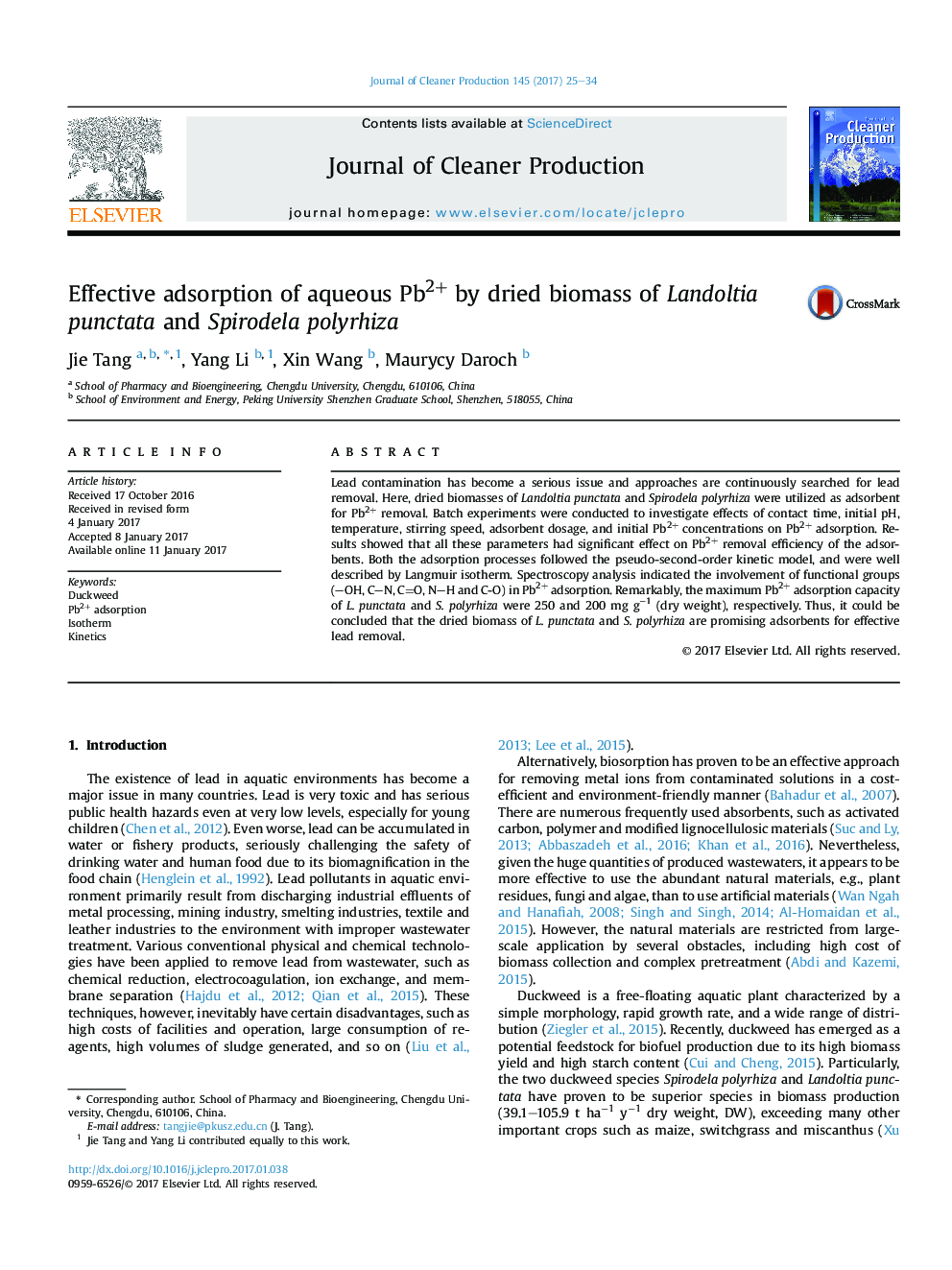| Article ID | Journal | Published Year | Pages | File Type |
|---|---|---|---|---|
| 5481597 | Journal of Cleaner Production | 2017 | 10 Pages |
Abstract
Lead contamination has become a serious issue and approaches are continuously searched for lead removal. Here, dried biomasses of Landoltia punctata and Spirodela polyrhiza were utilized as adsorbent for Pb2+ removal. Batch experiments were conducted to investigate effects of contact time, initial pH, temperature, stirring speed, adsorbent dosage, and initial Pb2+ concentrations on Pb2+ adsorption. Results showed that all these parameters had significant effect on Pb2+ removal efficiency of the adsorbents. Both the adsorption processes followed the pseudo-second-order kinetic model, and were well described by Langmuir isotherm. Spectroscopy analysis indicated the involvement of functional groups (-OH, C-N, C=O, N-H and C-O) in Pb2+ adsorption. Remarkably, the maximum Pb2+ adsorption capacity of L. punctata and S. polyrhiza were 250 and 200 mg gâ1 (dry weight), respectively. Thus, it could be concluded that the dried biomass of L. punctata and S. polyrhiza are promising adsorbents for effective lead removal.
Related Topics
Physical Sciences and Engineering
Energy
Renewable Energy, Sustainability and the Environment
Authors
Jie Tang, Yang Li, Xin Wang, Maurycy Daroch,
